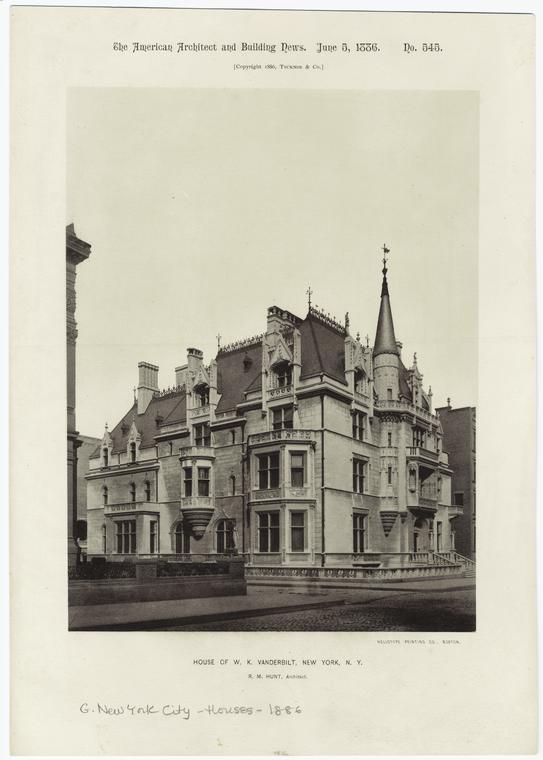One evening in the mid-1880s, New York City’s most esteemed members of society arrived at 350 Fifth Avenue for the event of the season: Mrs. Caroline Schermerhorn Astor’s ‘Four Hundred’ party. That night, as with many during the Gilded Age, the upper echelon of New York City gathered for a soiree in a mansion that perfectly matched its attendees – extravagant, opulent, elite. The evening’s guest list would be published years later in the New York Times by Mrs. Astor’s former sidekick Ward McCallister, who claimed that “there are only about four hundred people in fashionable New York society.”
Those four hundred people consisted of the esteemed tastemakers, industrialists, and tycoons of industry living in New York City during the Gilded Age, otherwise known as the time of economic boom from the end of the Civil War in 1865 to the turn of the 20th century. For the ultra-rich, the Gilded Age was a time of competition, corruption, and unchecked wealth, largely due to a lack of personal income tax and government regulation over the expansion of industries such as oil, railroads, and steel.
It’s no surprise that this environment fostered the creation of some of the most extravagant and gaudy homes that the city, and the country, had ever seen. In New York, these palatial abodes were built along what is now known as Fifth Avenue but was at the time more aptly named ‘Millionaire’s Row.’ Though most of the homes have long since been demolished, the legacy of Gilded Age architecture lives on in NYC… as do a few of the original mansions.
History of Gilded Age Architecture
Gilded Age architecture is derived from a style of design collectively known as Beaux-Arts, which got its name from the École des Beaux-Arts in Paris, the school at which the architectural style was taught. Characterized by decadent and imposing features, Beaux-Arts was heavily influenced by classical Roman and Greek forms, along with the more flamboyant French and Italian renaissance styles. Employed in the homes, museums, and municipal buildings of European aristocracy, the style became a status symbol of wealth and privilege in the late 1800s. It’s no wonder that it quickly spread across the pond to the American elite, many of whom were eager to bring European grandeur to their homes.
More on CitySignal:
One major proponent of the style was American architect Richard Morris Hunt, credited for transitioning the profession of architecture from being associated solely with construction and carpentry into a symbol of artistry and style. Hunt received his education at the École in the 1840s and contributed to projects such as the Louvre in Paris before returning to New York in the early 1850s. In New York, Hunt created the Tenth Street Studio Building, credited as the first Architecture school in the United States. At the studio, Hunt taught students what he learned in Europe, thereby helping to proliferate Beaux-Arts style into American design.
Though the Tenth Street Studio Building no longer exists, the legacy of its tenure cannot be underestimated. It served as a breeding ground for countless great American artists, including but not limited to those in the field of architecture. Painters Winslow Homer, Frederic E. Church, and Albert Bierstadt all rented studios at the space. Student William Robert Ware went on to found both the MIT and the Columbia Schools of Architecture. The artistic contributions of the students of Tenth Street Studio are too many to list. It’s worth mentioning that apprentices of Hunt’s also had direct impacts on the mansions of Millionaire’s Row – George B. Post, for example, with whom Richard M. Hunt designed the Cornelius Vanderbilt II House.
Lost Homes Of The Gilded Age and 5th Avenue Mansions
The Original Vanderbilt Mansion NYC
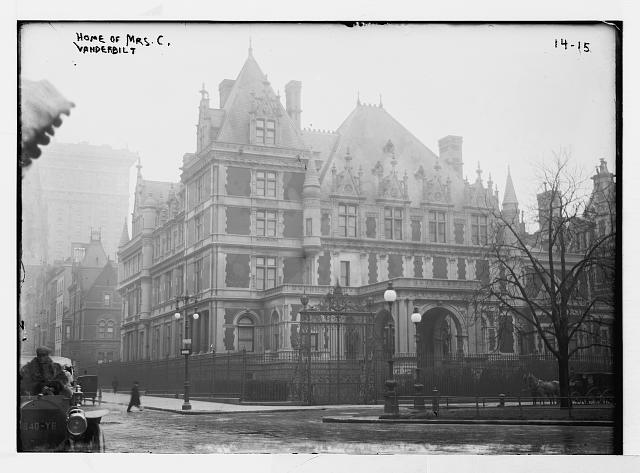
The original Vanderbilt mansion was completed in 1883 at Fifth Avenue and 57th Street. Built for Cornelius Vanderbilt II, the eldest grandson of railroad and shipping magnate Commodore Vanderbilt, the house featured a Chateauesque design, limestone trim, and a red brick exterior.
In 1887, Cornelius decided to expand the home, purchasing an additional five homes along West 58th Street and demolishing them to make way for his larger mansion. The project was finished in 1893, and is the largest private residence ever built in New York City. It was torn down in 1926, with a Bergdorf-Goodman store built in its place 1928.
The Residence of William and Alva Vanderbilt- The Petite Chateau
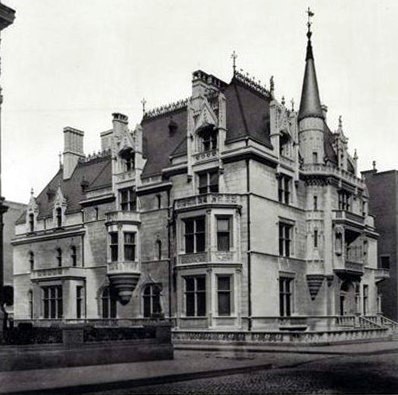
A few blocks down at 660 Fifth Avenue, the residence of William and Alva Vanderbilt was erected in 1883. Though the Vanderbilt name held much cache and prestige at the time, it was William’s wife, Alva who lifted the Vanderbilt family into the same social status as the Astor clan. Alva Vanderbilt worked with Richard M. Hunt to ensure her mansion would be eye-catching, unique, and worthy of high society. The abode was named ‘Petit Chateau’ – though, at over 100 rooms, it was far from petite. Upon completion, Mrs. Vanderbilt threw a party at the mansion so spectacular that it earned her and the Vanderbilts a place on Mrs. Astor’s ‘four hundred’ list.
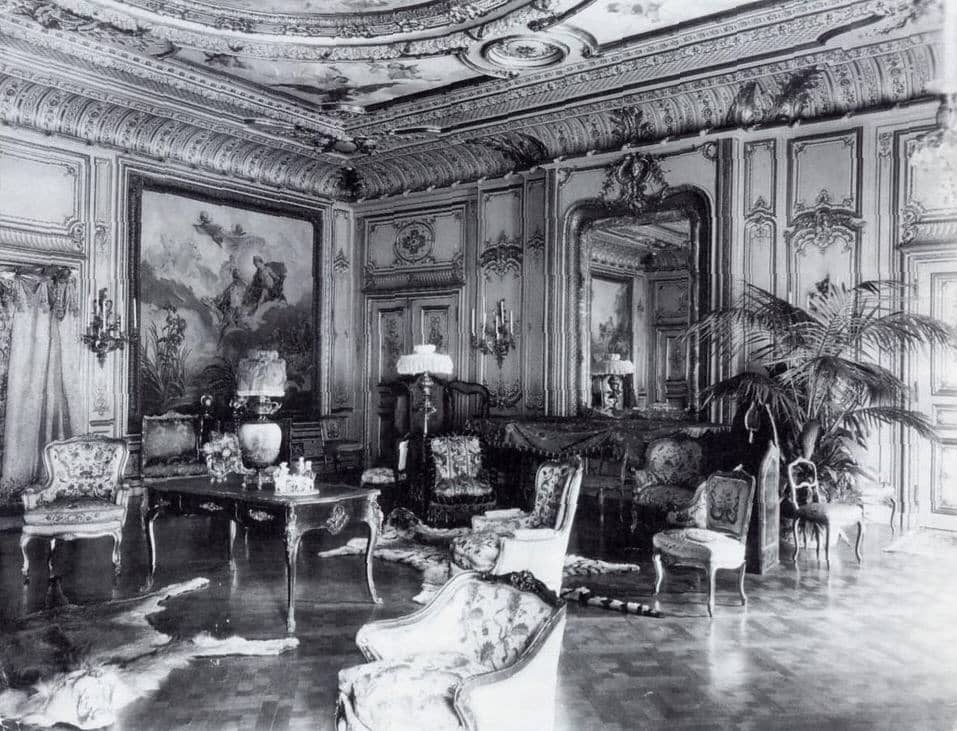
The home was demolished in 1926 and a Zara stands there today.
The Astor Mansion at 350 Fifth Ave
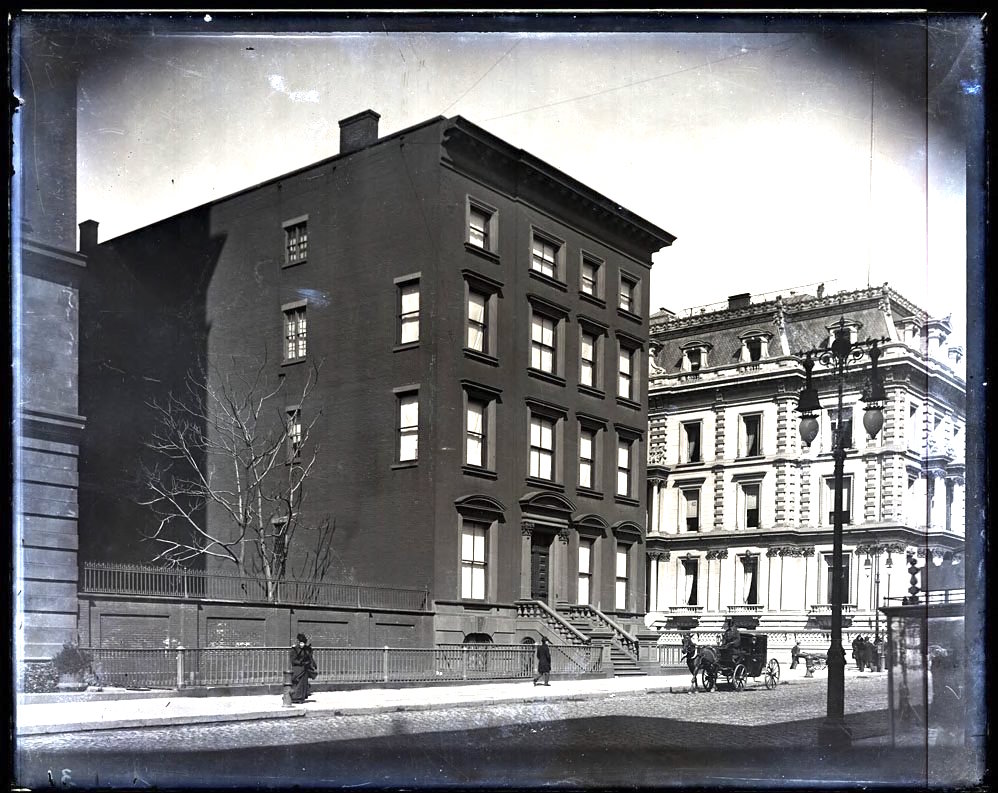
Though Mrs. Astor’s parties were the event of every social season; the first Astor mansion at 350 Fifth Avenue was nothing to write home about… on the outside, at least. The interior matched the opulence of the era, complete with columns, extravagant art, and imposing decor.
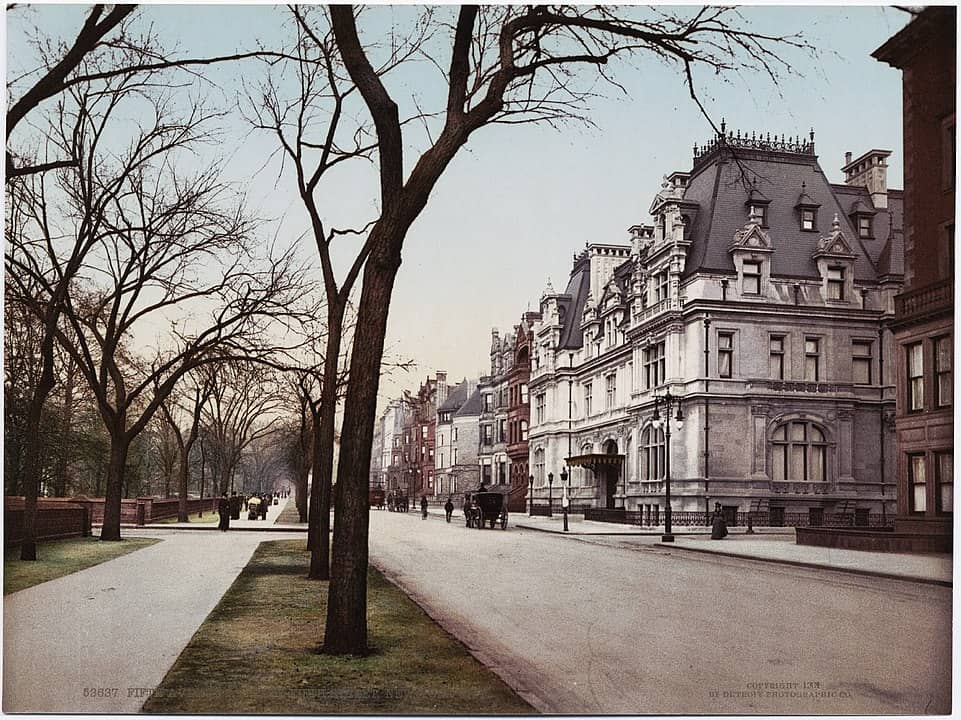
The Astor family leveled up in 1896 with the double mansion at 840 and 841 Fifth Avenue, built for Mrs. Caroline Schermerhorn Astor and her son, John Jacob Astor IV. The house was designed by Richard M. Hunt and could hold up to 1,200 people. It was demolished in 1926, and today the space is home to the Congregation Emanu-El of New York.
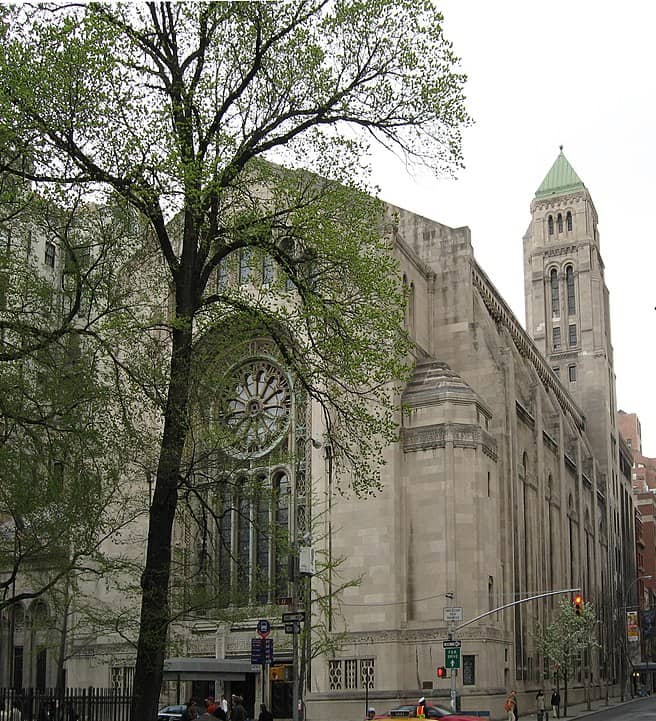
Remaining Gilded Age NYC Mansions
Though many of the great mansions of the period have since been demolished, there still remain some historical gems in New York City. Some can be toured, and some can even be purchased… for a price so high even Mrs. Caroline Schermerhorn Astor might bat an eye.
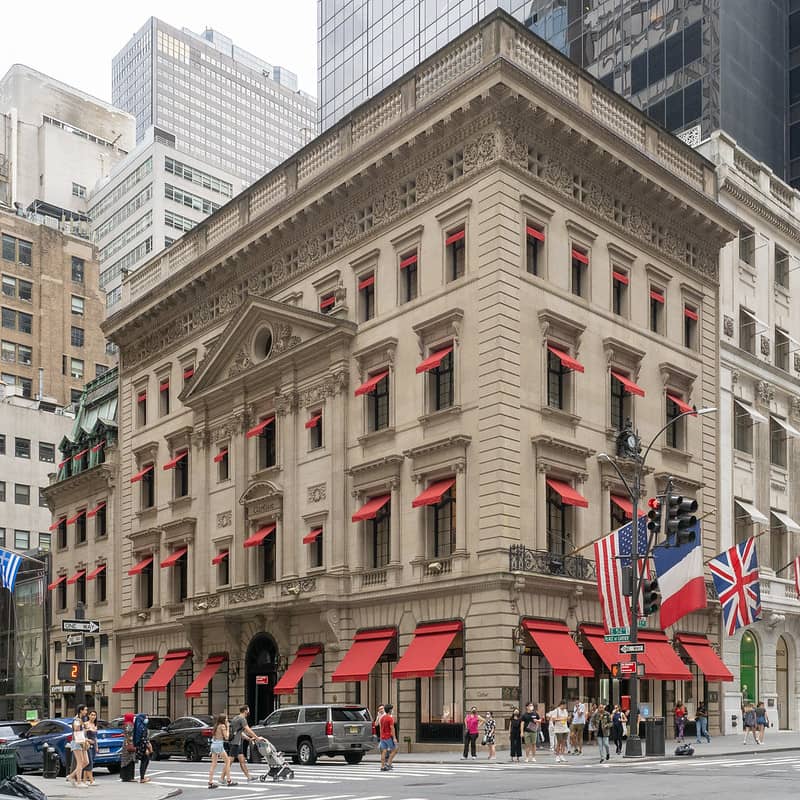
The Morton F. Plant House, located at 659 Fifth Avenue, was completed in 1905 and exists as a Cartier today. Boasting over 50 rooms and renaissance style architecture, the rumor goes that Mr. Plant traded the house to Cartier “in exchange for $100 and a $1 million string of pearls that Mrs. Plant admired.”
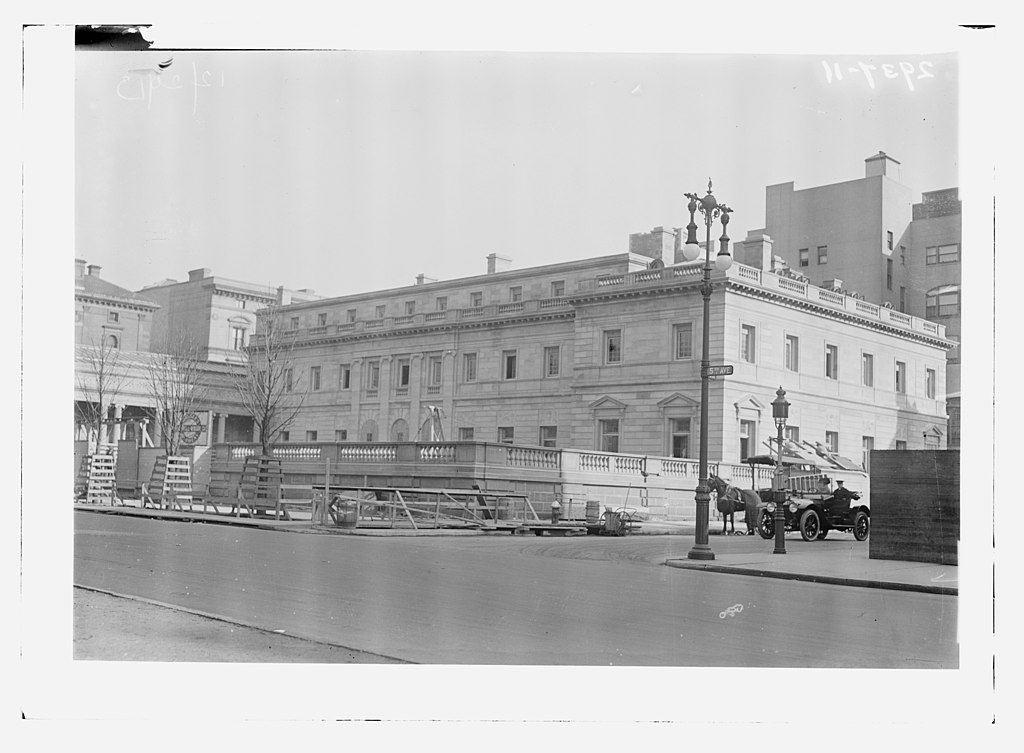
The Henry Clay Frick House, built between 1912 and 1914 and located at 1 East 70th Street, may be better known as the Frick Collection. The home was always intended to become a museum after the deaths of Frick, an art collector, and his wife. Today the Frick Collection can be visited Thursday – Sunday from 10am – 6pm, however, only at its temporary home at 945 Madison as the East 70th location is closed for renovations.

If a simple visit won’t suffice, some of these historical marvels are on sale for purchase. 991 Fifth Avenue, built in 1901 for widow Mrs. Mary Agustus King, is currently on the market for $44 million. The home is presently owned by the Irish Historical Society and is said to have kept much of the history from the early 1900s stunningly intact.

Another home for sale is the James F.D. Lanier House, located at 123 East 35th Street. The abode, built between 1901 and 1903, features carved stonework, a stone porch, and a copper roof, all remnants from the Gilded Age. The home is on the market for $33 million.
See The Gilded Age For Yourself
New York City boasts an impressive array of Gilded Age architecture even today, and the history of both the people and the period is rich – pun intended. HBO’s prestige drama “The GIlded Age” explores the drama between fictionalized versions of New York’s famous families, and has been lauded for its recreation of New York City and its mansions during that period.
For those looking to see the buildings in person, guided walking tours are also available, offering an up close and personal look at the history – of what is left, and what was lost.
Look down Fifth Avenue today and you’d likely never know that it was once home to many of the “four hundred most fashionable people in New York society.” But traces of the opulence exist and the legacy lives on – in remaining structures, in architectural work and study, and in art.
Emily Bice is a New York based writer born in Michigan, but with family in Canada - so on paper she’s the nicest person you’ll ever meet. Emily graduated from The University of Michigan’s School of Music, Theatre, and Dance. She has worked as an olive oil farmer, press correspondent at Cannes, and in television, but her favorite job is writer. Playwriting credits include before the flood (The Chain Theatre, NYC), Purgatory (developmental workshop, Ann Arbor, MI), See You In A Few (one act, the thing theatre company, Zoom). Check out more of her work at emilyabice.com!


